 The Carl D. Perkins Career and Technical Education Act, commonly known as Perkins V, marks a significant milestone in the evolution of Career Technical Education (CTE) in the United States. Enacted to empower learners with the skills needed for success in a rapidly changing workforce, Perkins V emphasizes the importance of “stakeholder engagement” in shaping and implementing effective CTE programs.
The Carl D. Perkins Career and Technical Education Act, commonly known as Perkins V, marks a significant milestone in the evolution of Career Technical Education (CTE) in the United States. Enacted to empower learners with the skills needed for success in a rapidly changing workforce, Perkins V emphasizes the importance of “stakeholder engagement” in shaping and implementing effective CTE programs.
In this blog post, Director of Member Engagement and Professional Learning Dr. Stephanie Perkins explores the key aspects of this activity in Perkins V and its impact on fostering a dynamic and responsive educational ecosystem.
The Role of Stakeholders
Stakeholder engagement in Perkins V is not merely a checkbox but a fundamental driver of success for CTE programs. These partners play a vital role in the planning, development, implementation, and evaluation of these programs. By bringing together diverse perspectives, stakeholders contribute valuable insights that help create a comprehensive and well-rounded educational experience for learners.
Educators are at the forefront of this initiative, working closely with industry partners to design curricula that blend academic knowledge with practical skills. Employers, in turn, provide crucial input on the skills and competencies needed in the workforce, ensuring that CTE programs produce graduates who are not only academically proficient but also well-prepared for real-world challenges.
Community members and parents are also essential partners, offering valuable insights into the local context and helping bridge the gap between education and community needs. Their involvement ensures that CTE programs are culturally relevant and aligned with the aspirations of the learners they serve.
Benefits of Stakeholder Engagement
- Relevance and Responsiveness: Engaging with those impacted by CTE ensures that CTE programs stay abreast of industry trends and technological advancements. This responsiveness is crucial for preparing learners with the technical and employability skills demanded by the evolving job market. Additionally, by involving employers in the educational process, Perkins V helps bridge the gap between classroom learning and workplace demands. This alignment is vital for reducing the skills gap and increasing the employability of CTE graduates.
- Diverse Perspectives: Stakeholder engagement brings together a diverse range of perspectives, enriching the educational experience. This diversity ensures that CTE programs are designed and cater to the needs of all learners, regardless of their background or aspirations. When directly involved in CTE programs, these partners can allow each learner to see themselves in every career.
- Community Support: Engaging community members and parents builds a strong support system for CTE programs. This support is crucial for sustaining and expanding these initiatives, fostering a sense of collective responsibility for the success of learners. Additionally, connecting community resources as a part of wraparound services for learners can improve CTE programs design by helping to meet the needs of each learner.
Challenges and Strategies
While stakeholder engagement is pivotal, it comes with its own set of challenges. Balancing the interests of various partners, addressing conflicting priorities and ensuring sustained commitment can be daunting. To overcome these challenges, communication and collaboration are key. Regular forums, advisory boards, and partnerships can facilitate ongoing dialogue, allowing impacted parties to contribute meaningfully to the CTE ecosystem.
Perkins V heralds a new era in CTE, emphasizing the significance of stakeholder engagement in shaping successful programs. By fostering collaboration among educators, employers, community members, and parents, Perkins V ensures that CTE remains a dynamic and responsive force in preparing learners for the challenges of the modern workforce. Through ongoing dialogue and collective effort, partners contribute to the creation of a robust and relevant educational ecosystem that empowers students to thrive in their chosen careers.
Advance CTE supports states in developing and executing comprehensive, ongoing, and impactful state engagement that begins in Perkins V but can ultimately broaden input and partnership in all work. This year, we have released a suite of supports designed to ensure your Perkins state plan serves as a powerful lever to achieve your state vision for career technical education, and more broadly CTE Without Limits. These supports include:
- Monthly Perkins Planning Office Hours,
- Opportunities for one-on-one discussion on Perkins data and State Determined Performance Levels (SDPLs) for members,
- New mini-briefs on strategies to support special populations in CTE, and more.
Additional resources can be found in the Perkins V section of the Learning that Works Resource Center.
 Dr. Stephanie Perkins, Director of Member Engagement and Professional Learning
Dr. Stephanie Perkins, Director of Member Engagement and Professional Learning


 With over 30 gubernatorial elections and legislative elections in all but four states, 2022 will likely lead to
With over 30 gubernatorial elections and legislative elections in all but four states, 2022 will likely lead to 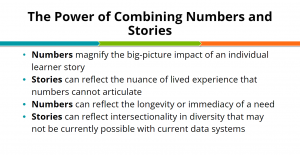 This session featuring Advance CTE and Edge Research inspired attendees to amplify learner outcome data and testimonials to create impactful data stories. Attendees were reminded to be in the driver’s seat on creating data ‘headlines’’ and to be proactive in addressing assumptions others might make about data. First step routines were also provided, such as mapping schedules for quantitative and qualitative data collection, quantitative data reporting and qualitative data access opportunities and comparing timelines with storytelling opportunities.
This session featuring Advance CTE and Edge Research inspired attendees to amplify learner outcome data and testimonials to create impactful data stories. Attendees were reminded to be in the driver’s seat on creating data ‘headlines’’ and to be proactive in addressing assumptions others might make about data. First step routines were also provided, such as mapping schedules for quantitative and qualitative data collection, quantitative data reporting and qualitative data access opportunities and comparing timelines with storytelling opportunities.  Edge Research provided storytelling tips — one included creating three to five headlines that encompass a data point audiences might not expect, highlight the most urgent findings, and provide a call to action. It is important to humanize qualitative data through phrases such as ‘1 out of X families’ or ‘X number of children need Y’.
Edge Research provided storytelling tips — one included creating three to five headlines that encompass a data point audiences might not expect, highlight the most urgent findings, and provide a call to action. It is important to humanize qualitative data through phrases such as ‘1 out of X families’ or ‘X number of children need Y’. 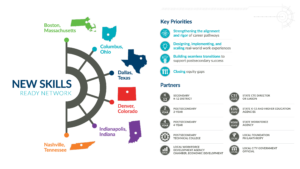
 The Attainment Network envisions an innovative education-to-workforce system that develops a diverse, talented workforce for current and future jobs, meets economic demands and sustains thriving communities. As The Network pursues this vision, their measure of success encompasses key evaluation questions embedded in equitable outcomes for learners. This includes measuring the number of diverse learners completing high-value credentials and receiving opportunities for high-wage, in-demand careers.
The Attainment Network envisions an innovative education-to-workforce system that develops a diverse, talented workforce for current and future jobs, meets economic demands and sustains thriving communities. As The Network pursues this vision, their measure of success encompasses key evaluation questions embedded in equitable outcomes for learners. This includes measuring the number of diverse learners completing high-value credentials and receiving opportunities for high-wage, in-demand careers.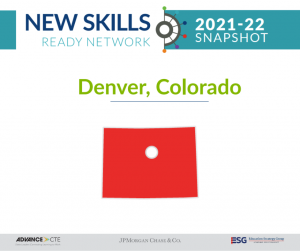
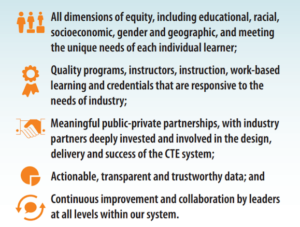
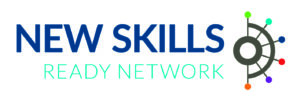 Today, Advance CTE and Education Strategy Group (ESG) released an
Today, Advance CTE and Education Strategy Group (ESG) released an 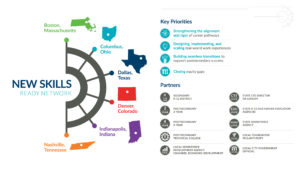
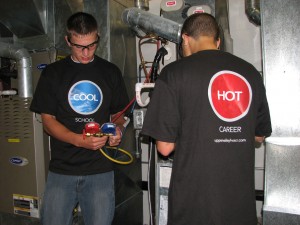
 And did I mention the meeting was in Anchorage, Alaska as a bonus? As evidence, here’s a picture of me…and a picture of a moose.Â
And did I mention the meeting was in Anchorage, Alaska as a bonus? As evidence, here’s a picture of me…and a picture of a moose. 